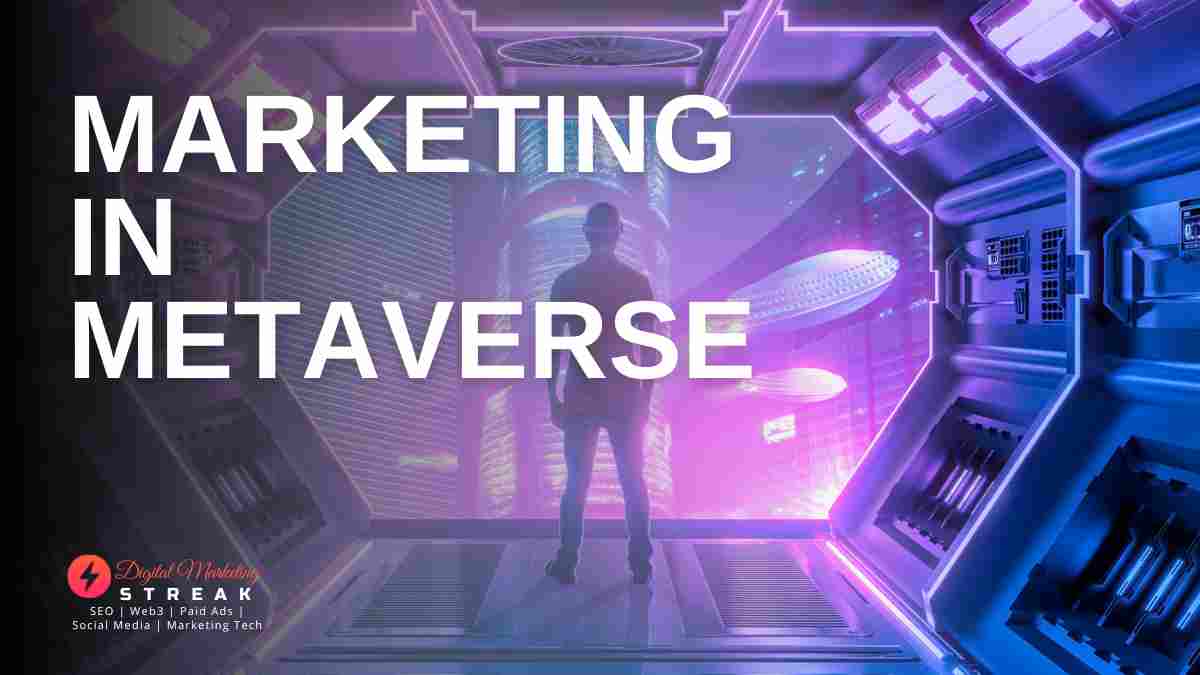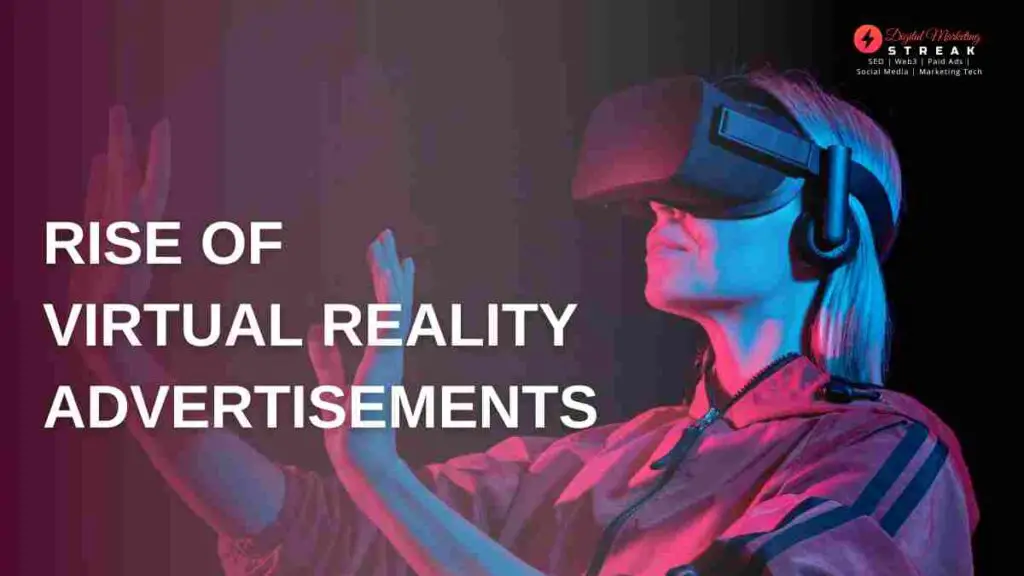Marketing in Metaverse is the application of marketing principles to virtual reality (VR) and augmented reality (AR) technologies.
Marketing technique and approach both will change when we transition from Web 2.0 to Web 3.0. The medium, audience, and approach will differ in the metaverse.
The first step of metaverse marketing is to understand the market and the target audience. When you understand the market, you can find which products are needed by the target group.
Metaverse marketing is a new way of thinking and approaching the market. In the VR world, advertising is playing an essential part.

In current marketing, advertising is still playing the biggest part and it will be for a long time.
Metaverse is a virtual world where you can create your own avatar and interact with other users. It’s like Second Life, except that it’s 100% real and there is no lag time between actions.
Table of Contents
Future of Marketing in Metaverse
The future of marketing is looking pretty wild, with new technologies like virtual reality, augmented reality, and mixed reality giving us new ways to reach consumers.
These technologies put consumers right in the middle of our message, giving them a firsthand experience of our products and collections.
For example, Balenciaga recently released a video game called Afterworld: The Age of Tomorrow. In the game, users can enter a virtual Balenciaga store and check out the fall collection. It’s a pretty cool way to give people a taste of what Balenciaga has to offer.
How Metaverse can attract More Customers?
Metaverse is a new virtual reality world that is open to everyone. You can use Metaverse as a platform to build your brand, promote your products and services, or even just entertain yourself with the latest technology.
This opens up many exciting possibilities for businesses looking at Metaverse as an opportunity for growth in their marketing strategy.
Imagine the possibilities of having a virtual office space where all employees can work remotely without worrying about long commutes.
Using Metaverse, you’ll be able to create an immersive environment for your customers in which they can interact with products and services before making purchases or decisions that impact their lives.
Virtual Reality (VR)
Virtual reality (VR) is a computer-generated simulation of a 3D environment that can be interacted with in a seemingly real or physical way by a person using special electronic equipment, such as a helmet with a screen inside or gloves fitted with sensors.
The term can refer to various technologies that incorporate similar functions, applications and display devices for creating an immersive user experience.
The Rise of Virtual Reality Advertisements

It is no secret that virtual reality has made its way into many industries around the world. From media companies like Netflix and Hulu who are utilizing VR technology for advertising their content, to sports team owners who use VR technology for new fan experiences at games. There’s no doubt that this technology will continue on its growth curve throughout 2022s!
While virtual reality can be a powerful tool for advertising, it is not without its own challenges. One of the biggest issues marketers face when creating VR ads is that they are often too short or lack content.
This creates an opportunity cost as viewers will stop watching after only seeing a few seconds worth of footage from one brand instead spending their time focused on other brands’ advertisements.
The Benefits of Virtual Reality Ads
The main benefit of using virtual reality ads is the ability to give users an immersive experience that allows them to feel like they are actually in that environment.
A great example of this is a campaign by Samsung called “The Way I See It,” in which viewers were given first-person views of different places around the world, such as London or New York City. This not only allowed Samsung to promote its products but also gave viewers an experience they may never have had otherwise.
The Future of Virtual Reality Ads
The future of virtual reality advertising is bright and will no doubt continue expanding in many different directions. The use of this technology will only increase as more companies integrate it into their marketing campaigns, which means that there will be even more opportunities for marketers who want to stay ahead of the game.
How Virtual Reality (VR) can Innovate Marketing Campaigns?
Virtual reality (VR) is a new way to experience the world. It’s also a new way to communicate market and sell.
VR has many advantages over more traditional media like print or television:
- It can be interactive and immersive – you can touch things in VR!
- You don’t need a lot of space for VR experiences – you can use your mobile phone as well as PCs or laptops!
- You get access to an endless source of content on any device; no matter what type of device you own. This means that there is no limit on how much content available for consumption when using virtual reality technology versus other mediums where one has limited options depending upon their location within society such as radio stations which may only broadcast certain shows depending upon whether they receive permission from artists who already exist elsewhere within their region rather than being able..
Can Virtual Reality (VR) Replace the Traditional Marketing Strategies?
VR is not a replacement for traditional marketing strategies. It can be used to supplement, but not replace them.
VR offers new opportunities in the form of:
- New channels and experiences that are created specifically for VR.
- New products and services that are developed using VR as an input or output
With VR, one could create entirely new marketing strategies that utilize the unique properties of virtual space. For example A 360-degree tour of a car factory.
Marketing in Metaverse is a New Challenge that can Lead to Creative Breakthroughs
The metaverse has been described as “a place where you can be anyone, do anything and be anything.” This includes brands in the metaverse space.
Brands have been exploring this new frontier for some time now, but they’re just starting to scratch the surface of what they’ll discover down there.
What type of content will resonate with consumers?
How do we go about creating meaningful experiences for them?
And how will we measure our success?
These are all questions that need answers before companies can start building their business models on top of these platforms—and those answers might come from experimenting with different types of marketing campaigns or even pivoting entirely away from traditional marketing tactics altogether!
My Personal View of Marketing in Metaverse
I believe the metaverse is a new challenge for marketers. It’s not just another platform, it’s an entirely new way of marketing.
Marketing in the metaverse requires a different approach than traditional marketing; you have to think about your target audience as well as their needs and wants, which can be difficult if you don’t know them well enough.
The metaverse offers many opportunities for businesses to reach customers in new ways—and this means that there’s no limit on how much money you can make from selling things online!
Marketing Opportunities in Metaverse
Metaverse is new territory for marketers, so it is important to understand the potential of this new platform.
Marketing in Metaverse can be done through virtual reality and augmented reality applications, mobile apps, websites, and social media platforms.
Virtual reality (VR) and augmented reality (AR) applications use digital objects in a 3D environment.
Marketers can use this technology to create interactive experiences for consumers. For example, marketers can use the metaverse to create virtual stores where consumers can shop and interact with each other.
They can use social media platforms such as Facebook or Twitter to reach out to their target audience and engage with them in real-time interactions.
How Metaverse is Different from Second Life?
Metaverse is a virtual world, and it’s not like Second Life. In fact, there are many differences between these two worlds:
- Metaverse is a 3D world where you can be anything you want. You don’t have to be “born” into the metaverse like in Second Life (SL). You can choose your gender or appearance and make yourself look exactly how you want while interacting with others on this virtual platform.
- While SL focuses on creating realistic environments for users to interact with each other, metaverse allows its users more freedom in terms of how they present themselves online—and even off-line too!
How do all Pieces Come Together?
In the metaverse, everyone has their own personal space with their own rules. There are no rules or laws because there is no government in this world; instead, there are many different groups of people who live together in harmony under one roof: The Metaverse itself!
Summing Up
Marketing in the metaverse should be a creative process. It needs to be innovative and creative to attract customers who are willing to pay for products and services. The most important thing is that you need to understand the customer’s needs, wants, and desires in order for them to get what they want from your business.

